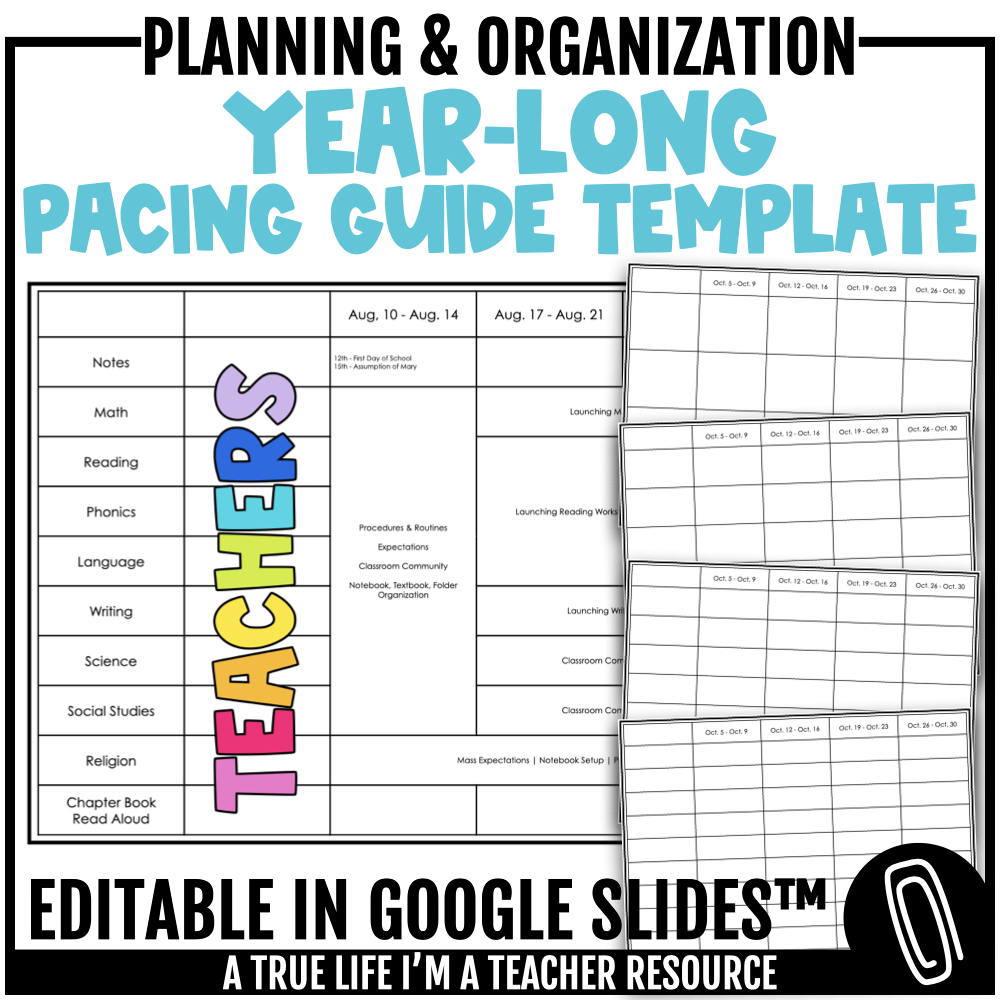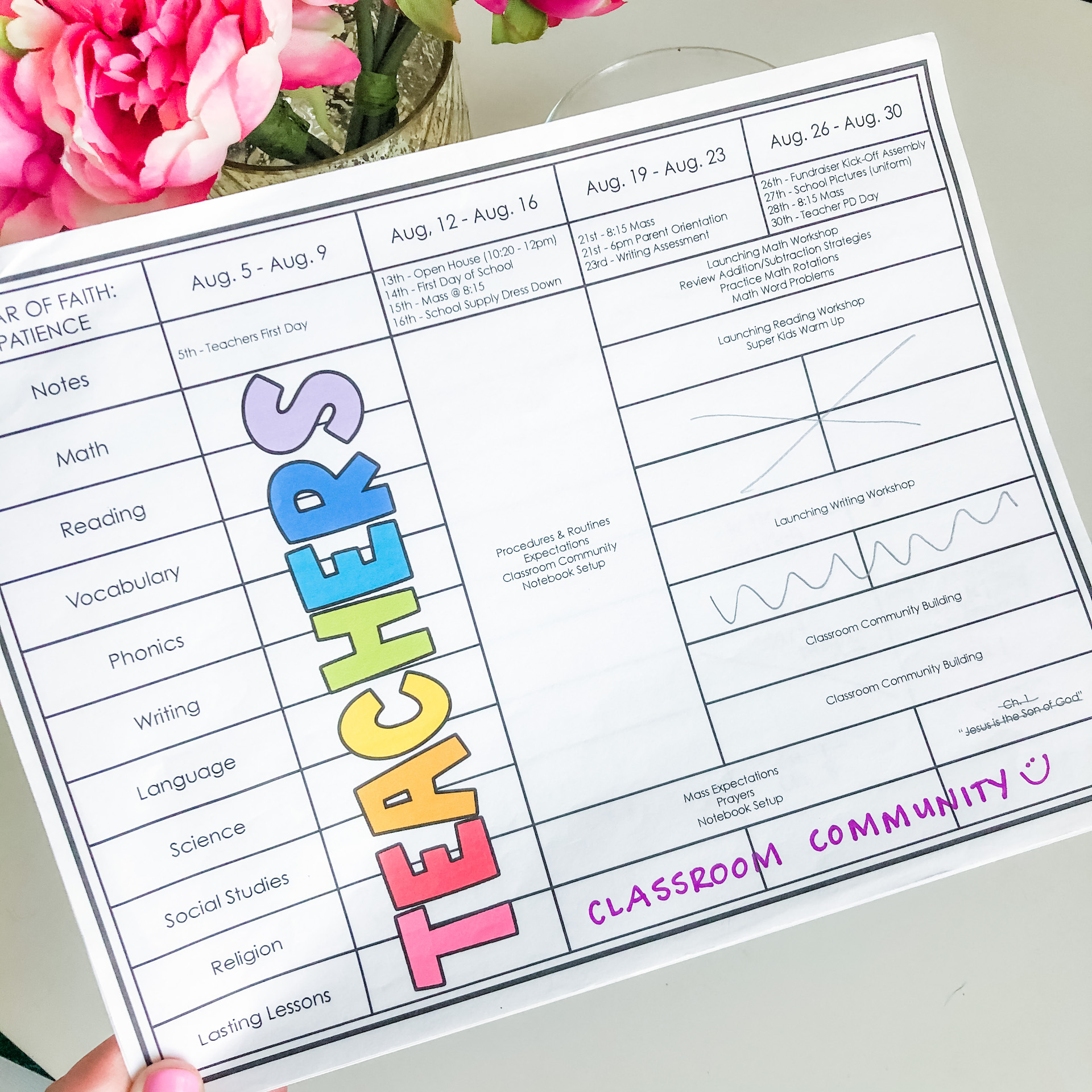 to make day-to-day lesson planning easier." width="1920" height="1920" />
to make day-to-day lesson planning easier." width="1920" height="1920" /> to make day-to-day lesson planning easier." width="1920" height="1920" />
to make day-to-day lesson planning easier." width="1920" height="1920" />
I use a pacing guide to help me see the big picture for the school year. It’s what I pull out before I plan day-to-day lessons. If you’re wanting to know how to use a pacing guide, you’re in the right place.
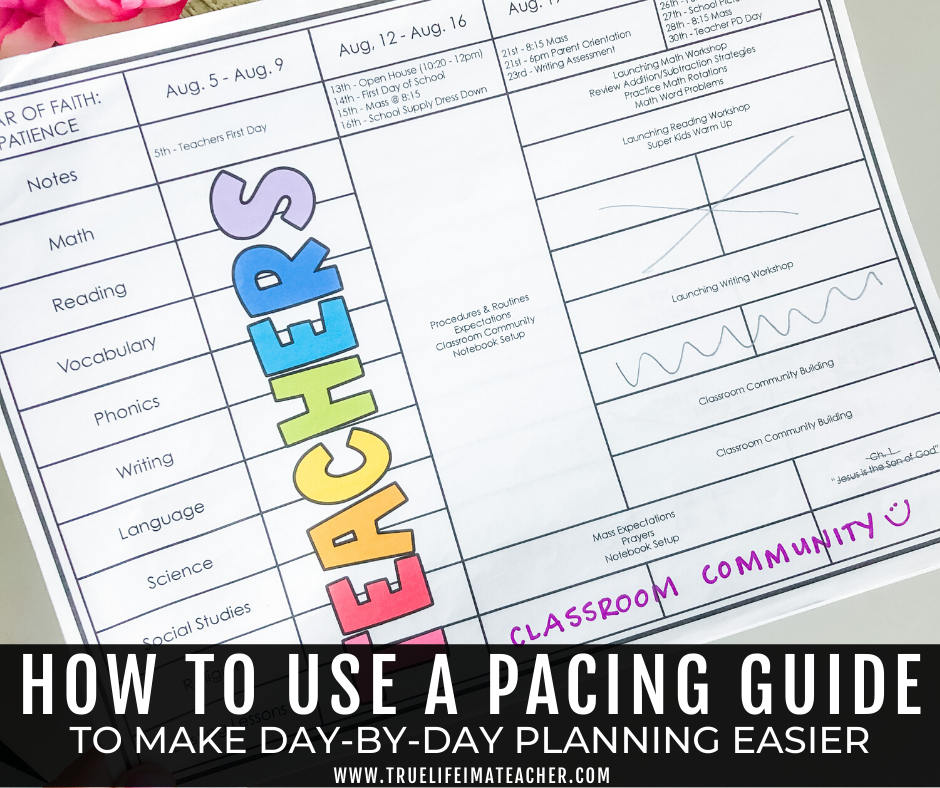 a pacing guide." width="940" height="788" />
a pacing guide." width="940" height="788" />
A pacing guide is used to pace out a certain period of time, and to identify standards or units to be taught during that time.
Personally, I prefer to use big ideas/units on my pacing guide, but it’s a personal preference.
Pacing guides are also a great way to make sure grade level teams are about on the same page. This doesn’t mean that every single class is teaching the exact same lesson, on the exact same day. It does mean however, that maybe we’re all doing the same novel study for the first two weeks during May.
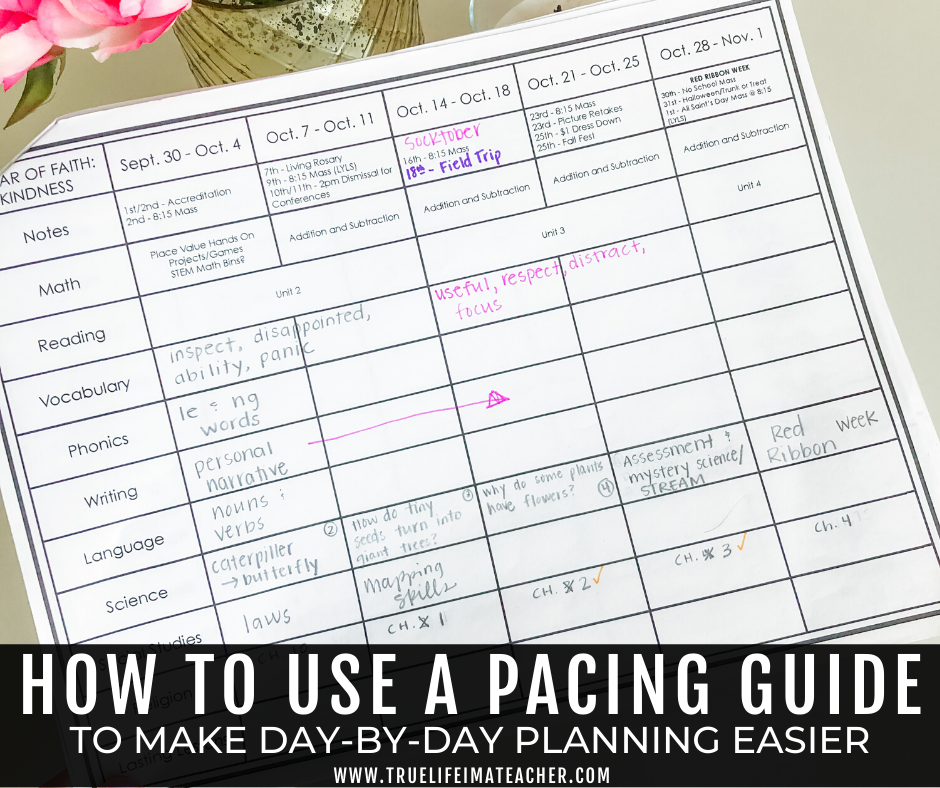 a pacing guide." width="940" height="788" />
a pacing guide." width="940" height="788" />
A pacing guide can help you see the big picture. For example, I try to take into consideration big breaks (Fall/Winter/Spring) and try to avoid starting a new unit right before.
In addition, if I know I have 16 reading units, and each unit is 2 weeks long, I’m able to figure out how long I have to “launch” reading before diving into our curriculum.
From week to week, my pacing guide is what keeps me on track for making sure I’m not teaching too fast, or too slow.
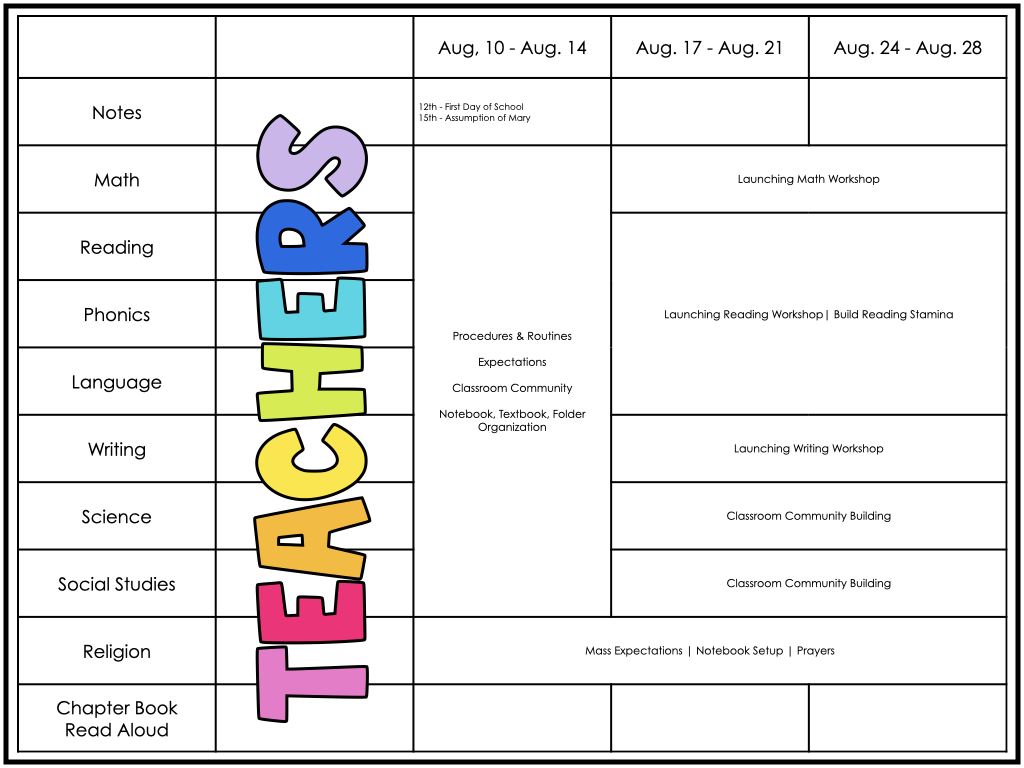 a pacing guide." width="1024" height="768" />
a pacing guide." width="1024" height="768" />
To help make your life a bit easier, I’ve created a template that you can type directly in on Google Slides™, or you can print and write like I do for mine.
You can click here, or on the image below.
